 |
 |
 |
 |
 |
 |
|
|
|
|
|
|
|
|
A hatchment is a distinctive rendering of a dead person's arms,
represented on a lozenge (not lozenge shaped arms, but arms painted
within a lozenge shaped frame). This feature is enough to indicate
that the rendering is a funeral hatchment, but there are often other
clues. The crest or helm may be replaced by a skull and the motto
may be replaced by a reference the death and resurrection. The background
is black or in some cases black and white (the significance of which
is explained below). Sometimes symbols of time, such as a sand-timer
or arrows, may be shown on the background. A cherub is sometimes
shown at the top or bottom corner.
The word hatchment is a corrupted version of the word achievement
- the correct term for what is commonly called a coat of arms (and
incorrectly as a crest)
One might have expected the traditional practice of painting hatchments
to have become totally obsolete by now, but there a surprising number
of modern examples (see below for some examples)
In Holland a hatchment is called a rouwbord, and in Germany, the
approximate equivalent is a totenschild
Although a family motto often appeared on a man's hatchment, it
was often replaced by a Latin phrase relating to death and resurrection
such as Resurgam ("I shall rise again"), In coelo quis
("There is rest in heaven"), or Mors janua vitae ( "Death
is the doorway to life").
Many English parish churches contain one or two hatchments to a
lord of the manor, or previous vicar. Some have great collections
for a whole family: such as that of the Hulse family of Breamore,
Hampshire or the Saltmarsh family whose hatchments reside in the
Saltmarsh chapel at Howden in Yorkshire.
|
Hatchment at
St Nicholas, Stanford On Avon, Northamptonshire |
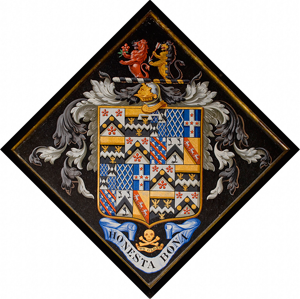 |
|
|
|
Hatchment at
Hoveton St John, Norfolk
|
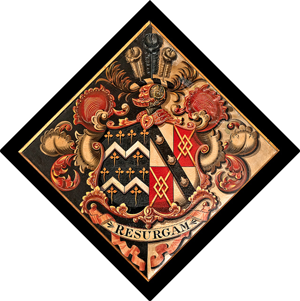 |
| |
| |
|
|
England
Hatchments have now largely fallen into disuse, but many hatchments
from former times remain in parish churches throughout England.
Hatchments were usually placed over the entrance of the armiger's
residence, at the level of the second floor, and remained for from
between 40 days and twelve months, after which they were removed
to the local parish church. The practice developed in the early
seventeenth century from the custom of carrying an heraldic shield
before the coffin of the deceased, then leaving it for display in
the church. In medieval times, helmets and shields were sometimes
deposited in churches and a few examples may still be seen in English
parish churches.
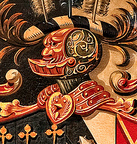  English
h atchments can often be dated from their artistic style. For example
seventeenth century hatchments often feature particularly ugly helms
which were characteristic of the period. English
h atchments can often be dated from their artistic style. For example
seventeenth century hatchments often feature particularly ugly helms
which were characteristic of the period.
Hatchments became rare early in the twentieth century. In 1949
the Sunday Times (then still a respectable newspaper) ran an extended
correspondence to the editor concerning the use of hatchments. Here
are extracts:
"I well remember seeing a hatchment fixed over the front
door of the Earl of Powis' house on the west side of Berkeley
Square, in 1891."
"In 1925 a very old lady died in Eaton Square, London. The
hatchment was hung over the front door. I was so impressed that
I took a snapshot of it, feeling that I would be unlikely to see
such a thing again."
"On the death of the Rector of Exeter College, Oxford, in
1944, a hatchment was hung over the main gate of the College."
At the universities of Oxford and Cambridge it was usual to hang
the hatchment of a deceased head of a house over the entrance to
his lodge or residence. There is a fine collection of such hatchments
at All Souls College in Oxford - the Wardens' arms each being impaled
with the arms of the college.
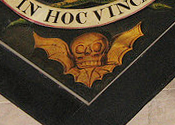  In
the event of the death representing the 'end of a line' a death's
head is displayed. A death's head is a human skull. In practice
death's heads are used more freely. In
the event of the death representing the 'end of a line' a death's
head is displayed. A death's head is a human skull. In practice
death's heads are used more freely.
When the deceased is a military or naval officer, colours and military
or naval emblems are sometimes placed behind the arms.
|
Hatchments at St Deny's Church, Kirtling,
Northamptonshire, England
|
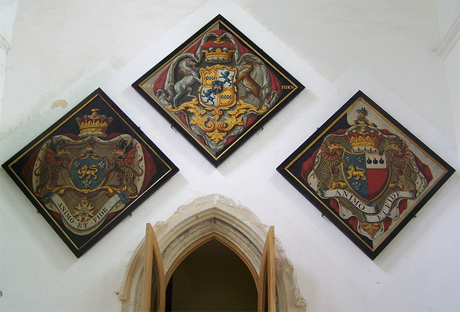 |
| |
|
Hatchments at St Mary & St Nicholas Church,
Chetwode, Buckinghamshire
annotated photograph
|
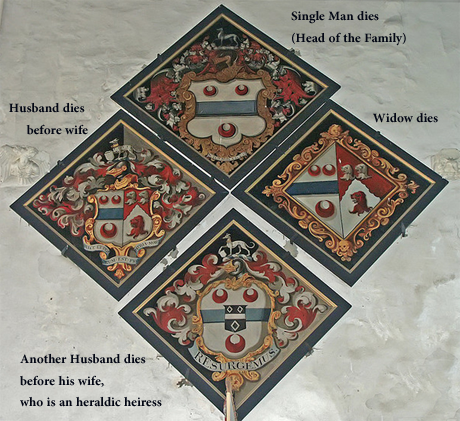 |
| |
|
|
Hatchment of John Manners, 3rd Duke of Rutland,
whose wife predeceased him
|
|
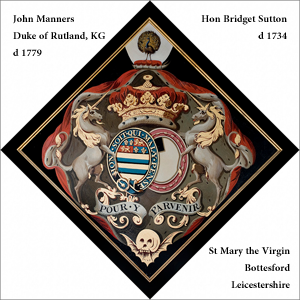
|
| |
|
Hatchment of Charles Manners, 4rd Duke of
Rutland, whose wife survived him.
|
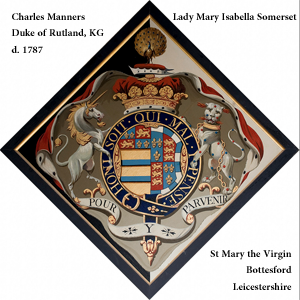 |
| |
|
Hatchment of Elizabeth, Duchess of Rutland,
whose husband outlived her
|
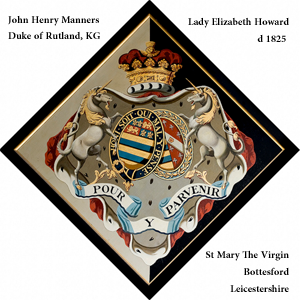 |
|
|
|
Hatchment of a second son of the Duke of
Rutland,
who died a bachelor
(note the crescent and lack of the ducal
coronet & robes)
note also the death's dead to indicate no
heirs)
|
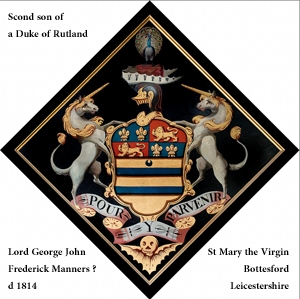 |
| |
|
|
|
|
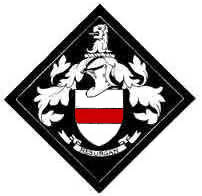 A
Bachelor's Hatchment. A
Bachelor's Hatchment.
For a bachelor the hatchment bears his arms (shield, crest, and
other appendages) on a black lozenge.
On the left are the fictitious arms of Mr Redfess who died a bachelor.
On the right is a real example
|
|
|
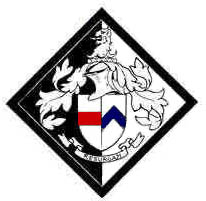 A
Married Man's Hatchment. A
Married Man's Hatchment.
If the hatchment is for a married man, with a surviving wife, his
arms upon a shield impale those of his wife; The dexter half of
the background is black (the husband being dead), the sinister half
of the background is white (his wife still being alive).
If Mr Redfess had been married to the daughter of Mr Bluechevron,
and if she were still alive at his death, his hatchment would look
like this the fictitious arms on the left
On the right is a real example.
|
|
A Saltmarsh hatchment.
The white background to the sinister side
of the lozenge tells us that the armiger's wife survived him.
|
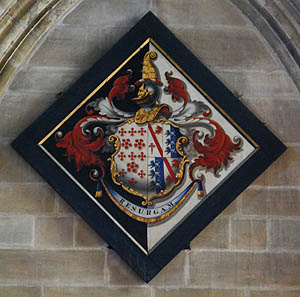 |
|
|
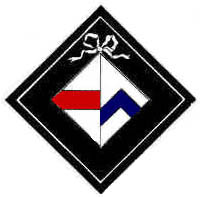 A
Widow's Hatchment A
Widow's Hatchment
For a widow the husband's arms are given with her own, but upon
a lozenge, with ribbons, without crest or appendages, and the whole
ground is black.
When the imaginary widowed Mrs Redfess died her hatchment would
look like the one on the left
On the right is a real example.
|
|
|
|
Another Saltmarsh Hatchment.
This hatchment is a little different - there
is no crest, torse or lambrequin - just some decoration and
a cherub. The arms represented on a lozenge, so we can assume
that these the arms of a wife who died after her husband.
|
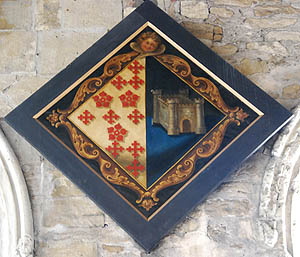 |
|
|
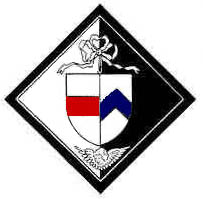 The
Hatchment of a Wife The
Hatchment of a Wife
For a wife whose husband is alive the same arrangement is used,
but the sinister background is black (for the wife) and the Dexter
background is white (for the surviving husband).
If Mrs Redfess, nee Bluechevron, had died first, but after her
marriage, her hatchment would look like the one on the left.
On the right is a real example.
|
|
Hatchment of a dead wife
All Saints, Salhouse, Norfolk
|
|
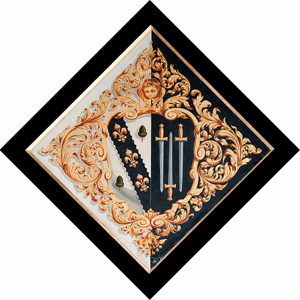
|
| |
|
|
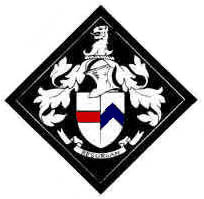 The
Hatchment of a Widower The
Hatchment of a Widower
For a widower the same is used as for a married man, but the whole
ground is black (both spouses being dead).
So the hatchment for Mr Redfess, his wife having predeceased him,
would look like the one on the left (assuming he had not remarried)
On the right is a real example.
|
|
Hatchment of a widower,
Holy Trinity Church, Blatherwycke, Northamptonshire
|
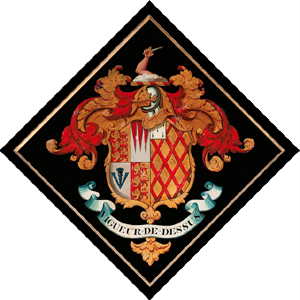 |
|
|
The Hatchment of a Remarried Widower
When there have been two wives or two husbands the ground may be
divided in a number of different ways.
- Option 1: The shield is shown like that of a bachelor, each
of the wives having their own mini square hatchments inset to
the sides (first wife to the Dexter)
- Option 2: The husband's arms remain in the Dexter half and the
two wives have their arms in the sinister half, divided per pale,
each wife having half of the sinister half.
- Option 3: The shield is divided into three parts per pale, with
the husband's arms in the middle section and the arms of each
of his wives to each side of him
- Option 4: The husband's arms remain in the Dexter half and the
two wives have their arms in the sinister half, divided per fess,
each wife having one quarter of the whole shield, one half of
the sinister half.
If on his second marriage Mr Redfess had married the daughter of
Mr Greencross, and she died before him, then his hatchment would
look like one of the following
|
Option 1. The shield is shown like that of
a bachelor, each of the wives having their own mini square
hatchments inset to the sides (first wife to the Dexter)
|
Option 2. The husband's arms remain in the
Dexter half and the two wives have their arms in the sinister
half, divided per pale, each wife having half of the sinister
half.
|
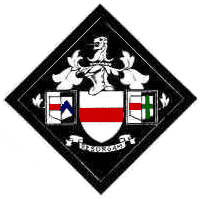 |
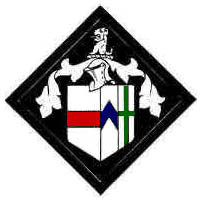 |
|
Option 3: The shield is divided into three
parts per pale, with the husband's arms in the middle section
and the arms of each of his wives to each side of him
|
Option 4: The husband's arms remain in the
Dexter half and the two wives have their arms in the sinister
half, divided per fess, each wife having one quarter of the
whole shield, one half of the sinister half.
|
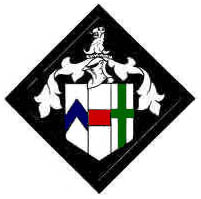 |
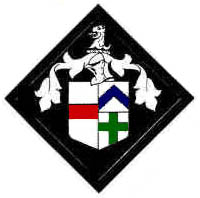 |
|
|
|
|
|
| |
| |
|
|
| |
| |
|
An example of Option 3
Hatchment at St Mary's, Ecclesfield, Yorkshire
???
|
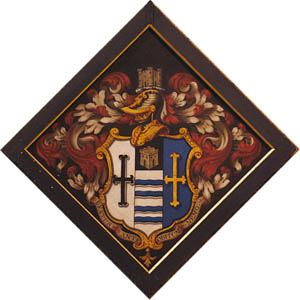 |
|
|
| |
|
|
| |
|
|
|
|
The Hatchment of a Widower whose second wife survives him.
The options are much the same as the previous case, except that
a patch if the background is white to indicate that the second wife
is still alive. The white patch matches the background behind her
arms.
If Mr Redfess had died after his first wife, but before the second,
his hatchment would look like one of the following:
|
Option 1. The shield is shown like that of
a bachelor, each of the wives having their own mini square
hatchments inset to the sides (first wife to the Dexter)
|
Option 2. The husband's arms remain in the
Dexter half and the two wives have their arms in the sinister
half, divided per pale, each wife having half of the sinister
half.
|
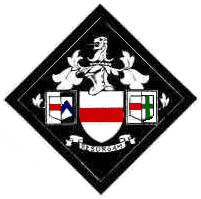 |
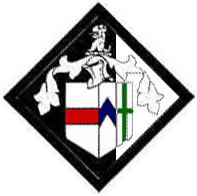 |
|
Option 3: The shield is divided into three
parts per pale, with the husband's arms in the middle section
and the arms of each of his wives to each side of him
|
Option 4: The husband's arms remain in the
Dexter half and the two wives have their arms in the sinister
half, divided per fess, each wife having one quarter of the
whole shield, one half of the sinister half.
|
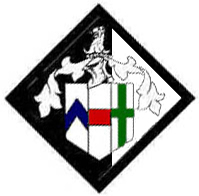 |
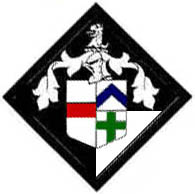 |
|
|
|
|
An Example of Option 2.
A man has died leaving his second wife a
widow
(the hatchment for his first wife is shown
above)
All Saints, Salhouse, Norfolk
|
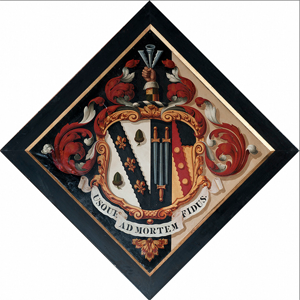 |
| |
|
An Example of Option 2.
The hatchment of Michael Henry Blount [1789-1874],
St Margaret’s Church - Mapledurham, Oxfordshire
|
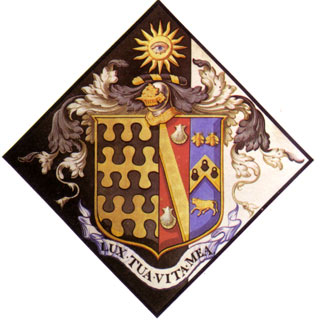 |
| |
|
An example of Option 4
St Mary's Church, Northiam, East Sussex, England.
|
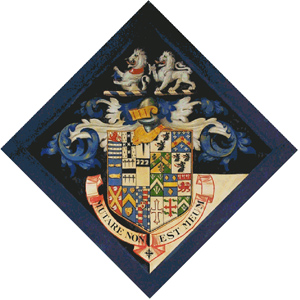 |
| |
| |
| |
|
|
|
|
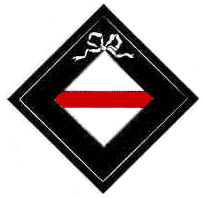 The
Hatchment of an unmarried daughter The
Hatchment of an unmarried daughter
For a single woman, her arms are represented upon a lozenge with
a black background.
On the left is the hatchment of Miss Redfess
On the right is a real example.
|
|
|
|
Hatchment of an unmarried daughter of the
Earl of Guildford, Lord North, All Saints Church, Kirtling,
Cambridgeshire
|
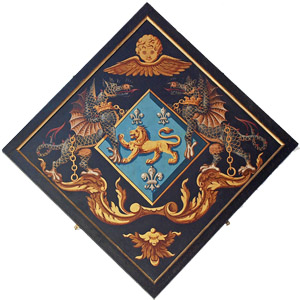 |
|
|
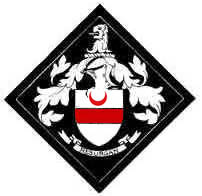 The
Hatchment of an unmarried son The
Hatchment of an unmarried son
The principle is the same for any unmarried man.
In the case of Mr Redfess's second son the arms shown in the hatchment
on the left will be differenced by a mark of cadency in the form
of a crescent
The hatchment on the right is for the second son and also bears
a small crescent as a mark of cadency.
|
|
|
|
Hatchment of a second son of the Duke of
Rutland,
who died a bachelor
(note the crescent and lack of the ducal
coronet & robes)
note also the death's dead to indicate no
heirs)
|
 |
|
|
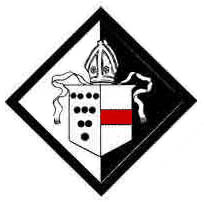 The
Hatchment of a Bishop The
Hatchment of a Bishop
Bishops and certain other office holders impale their own arms
with those of their office.
If Mr Redfess become a bishop and dies in office his hatchment
will look like the one on the left. The arms of the bishopric are
on the Dexter with a white background (the bishopric lives). Mr
Redfess's personal arms are shown on the sinister with a black background
(since Mr Redfess is dead).
Real examples are shown on the right.
|
|
|
|
Hatchment to Edward Maltby, Prince Bishop
of Durham.
Arms of See of Durham impaling the arms of Maltby)
Note the crown encircling the bishop’s mitre
(placed in the Church of St John the Baptist,
Egglescliffe, County Durham by his son Henry Joseph Maltby,
rector there in 1859)
|
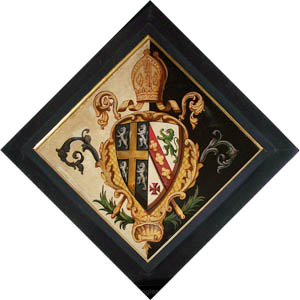 |
|
|
|
The Hatchment of a past Warden of All Souls,
Oxford
The college - white background (Dexter) - lives
but the warden - black background (sinister) - is dead
|
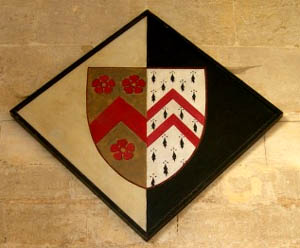 |
| |
| |
|
|
|
|
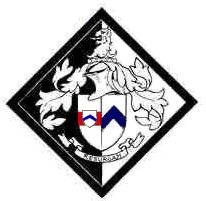 The
Hatchment of a Man who has married an Heraldic Heiress The
Hatchment of a Man who has married an Heraldic Heiress
If the hatchment is for a married man with a surviving wife, his
arms upon a shield impale those of his wife, and if she is an heraldic
heiress her arms are placed upon an escutcheon of pretence (sometimes
with crest and other appendages). The Dexter half of the background
is black (the husband being dead), the sinister half of the background
is white (his wife still being alive).
So if Miss Bluechevron had been her father's heiress, when she
married Mr Redfess, his hatchment would look like the one above
left.
A read example is shown on the right.
|
|
|
| |
|
This is an unusual but perfectly correct
hatchment.Henry Eve's arms were: Sable a fess or between three
cinquefoils argent (Eve). His daughter Dorothy would have
used the same arms displayed on a lozenge. When she married
she brought her arms to be impaled with her husband's (on
the sinister side of the hatchment). As an heraldic heiress
her father's arms also appear in escutcheon on her husband's
arms on the dexter side. In this case she married into a cadet
branch of the same family, so her husband's arms are identical,
except for a crescent brissure used as a mark of cadency.
Frame inscribed: "Mrs. Dorothy Eve,
the wife of Charles Eve, of Canterbury, Gent, died on June
ye 16th 1755. Interred here the 26th instant aged 31 years"
.Motto: In vitae medio morimur
Church of Saints Peter and Paul, Lynsted,
Kent, England.
|
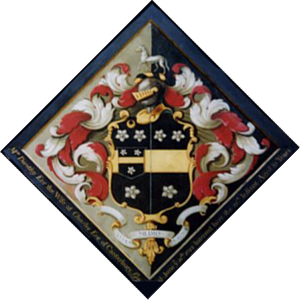 |
| |
|
|
| All Saints, Riply, Yorkshire |
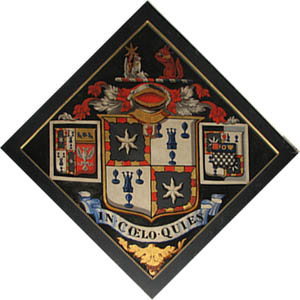 |
| |
|
|
|
|
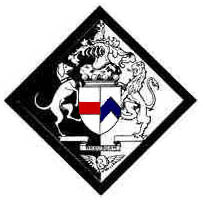 The
Hatchment of a Peer The
Hatchment of a Peer
The principles are exactly the same as for anyone else - though
the appearance can be much busier because of the supporters, coronet,
robes and honours.
If Mr Redfess becomes Lord Redfess before his death, his hatchment
would look like the one on the left.
A read example is shown on the right.
|
|
Hatchment of Charles Manners, 4th Duke of
Rutland, whose wife survived him.
|
 |
|
|
Hatchment of a woman who has had two husbands
This is tricky, and authorities differ where they mention the possibility
at all. One option, shown on the right adapts one of the options
for a man who has had two wives (and tells us that both husbands
predeceased her).
Another option is shown below.
|
Hatchment from St Mary's Church, Dullingham,
Cambridgeshire
(A woman who married first a Viscount and
then a commoner?)
|
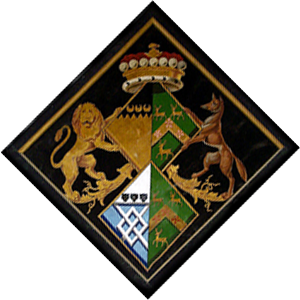 |
| |
| |
|
| |
|
St Leonards Deal
Azure a chevron argent between three standing bowls or, issuing
therefrom three boars' heads palewise argent tusked or langued
gules (Bowles) To Dexter of main shield, Sable three pheons
argent (Nicholls), impaling, Bowles Dexter background black
To sinister of main shield, Argent a lion rampant within a
bordure azure (Renton), impaling, Bowles Dexter background
black No crest Mantling: Gules and argent
On motto scroll: In Memory of Mrs. Thomasin
Renton Frame decorated with skulls and crossbones For Thomasin
Bowles, who married 1st, George Nichols of Deal, and 2nd,
1710, Alexander Renton (died 1720), and died 1730 Thomasine
Rentone bur 1 May 1730
|
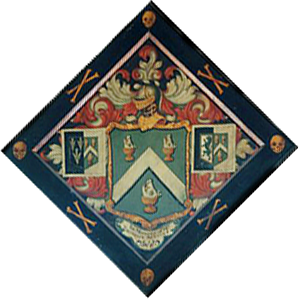 |
|
|
|
|
|
|
Odd and Interesting Hatchments
Hatchments provide a great deal of information, but they are sometimes
confusing and occasionally seem to be impossible.
Sometimes this is because of unusual family histories, and sometimes
because of errors. Sometimes the impossibility results from a failure
to use marks of cadency - so that men who married a cousin appear
to have married their own daughter.
Sometimes the interest lies in some artistic eccentricity.
|
|
Hatchment at Christchurch Priory, Hampshire
note the death's head in place of a crest
|
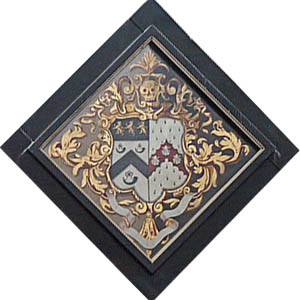 |
|
|
Hatchment from Hoveton St John, Norfolk,
England
The arms suggest that a man has married his
own daughter who was an heraldic heiress. More likely he married
a cousin who was the daughter of the head of the family.
|
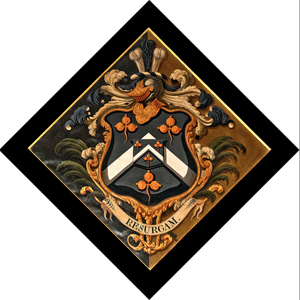 |
|
|
|
This is a mock hatchment from St Michael's
Church, Framlingham, Suffolk, England using bogus arms
It commemorates the US 390 Bombardment Group
The motto "sur le nez" means "on the nose"
|
|
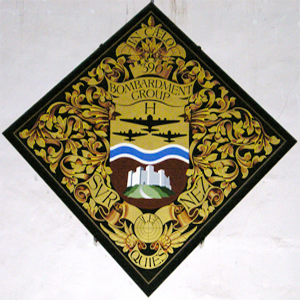
|
|
|
Hatchment from St Andrew's Church, Curry
Rivel, Somerset, England
What is happening here? The lozenges suggest
women married to each other. Perhaps this is a Baroness in
her own right who married an Earl, and the Earl is given a
lozenge just for a pleasing symmetry.
|
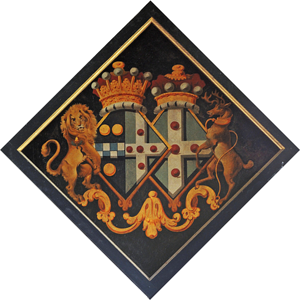 |
|
|
|
This is a hatchment of Charles Sackville-Germain,
Duke of Dorset KG, who died unmarried. His titles died with
him. The hatchment rests in St Peter's Church, Lowick, Northamptonshire,
England. The interest lies in the odd shape - was it truncated
to fit a narrow space?
|
 |
|
|
A Hatchment from Holy Cross Church, Seend,
Wiltshire, England
What is happening here? The arms suggest
a woman of the Awdry family who married her own father - but
in reality probably married a cousin.
|
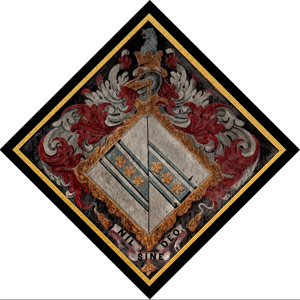 |
|
|
|
A modern looking hatchment in St Michael
& All Angels Church, Sidestrand, Norfolk, England. This
is the hatchment of Samuel Hoare, 1st Viscount Templewood,
died 1959, survived by his wife (born Lady Maud Lygon)
The interest here is the effect of party
colouring not only the background but also the frame.
|
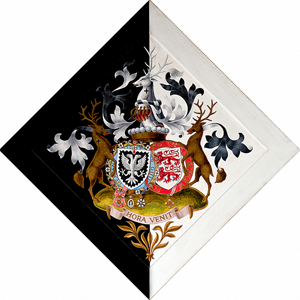 |
|
|
New Arms
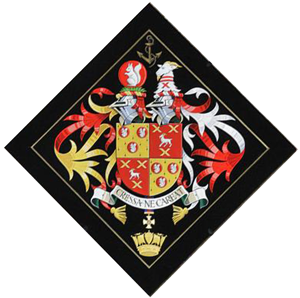 According
to many sources the practice of raising hatchments as funeral monuments
is long dead. A little research reveals that this is far from true.
Here are a few examples. According
to many sources the practice of raising hatchments as funeral monuments
is long dead. A little research reveals that this is far from true.
Here are a few examples.
In late 2011 the Bishop of Newcastle, the Right Reverend Martin
Wharton dedicated a new hatchment mounted in St Aidan's Church,
Bamburgh,
The hatchment commemorates Captain Joe Baker-Cresswell, who died
in 1997. The hatchment features the Cresswell arms and motto, with
the addition of Captain Baker-Cresswell's Distinguished Service
Order medal.
|
| |
|
Holy Trinity - Stratford-upon-Avon
|
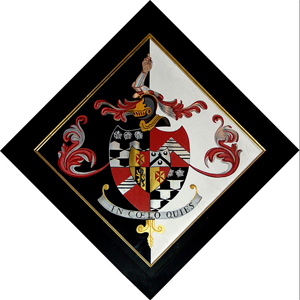 |
| |
| |
|
|
Hatchment for George Granville Lancaster,
2001:
Argent 2 bars invected gules as many flaunches of the second
each charged with a lion passant guardant of the first
Crest: A lion's head erased argent collared vair langued gules
standing on 2 molets of the third
Kelmarsh, Northamptonshire, 2001?
|
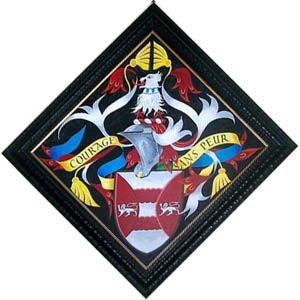 |
|
|
|
|
This hatchment was commissioned by Abba Seraphim,
Metropolitan of Glastonbury of the British Orthodox Church
within the Coptic Orthodox Patriarchate of Alexandria. As
Abba Seraphim is still alive his currently hatchment hangs
in his home in preparation for his funeral.
(The red things are not starfish but seraphim)
|
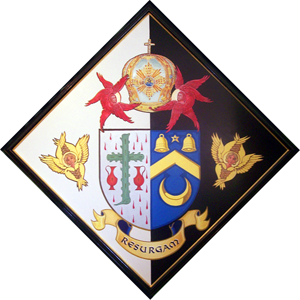 |
|
|
|
|
| |
|
|
|
|
The hatchment of George Hugh Cholmondeley,
6th Marquess of Cholmondeley, GCVO, MC (d
1990)
who predeceased his wife
|
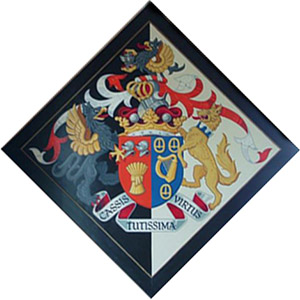 |
|
|
| |
| |
|
| |
Assorted Examples
|
|
|
Hatchment of a member of the Tyne family,
St Peter & St Paul, Longbridge Deverill, Wiltshire
|
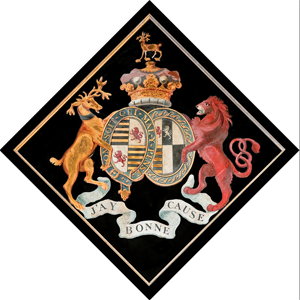 |
|
|
|
Memorial in Hambledon Church
Note the second son is carrying a skull to
denote that he predeceased his father
|
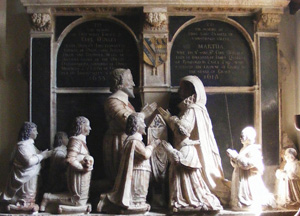 |
| |
| Memorial at St Marharet's Church, Gedney |
 |
| |
|
|
A Hatchment of a member of the Frewen family
in St Mary's Church, Northiam, East Sussex, England
|
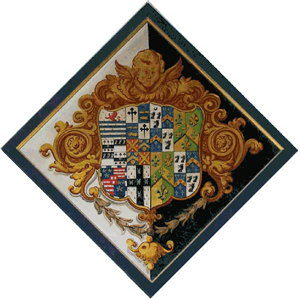 |
| |
|
A Death's Head - a winged skull
|
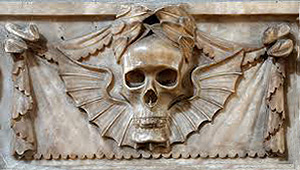 |
|
|
|
The Filijambe Memorial at Bakewell
|
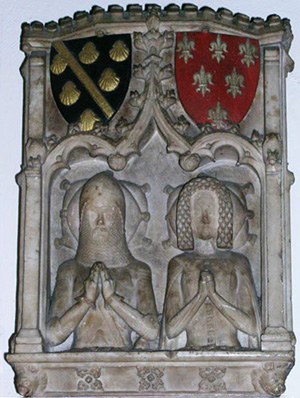 |
| |
|
|
Hatchment of a member of the Staunton family
(?), St Mary's Church, Warwick, England
|
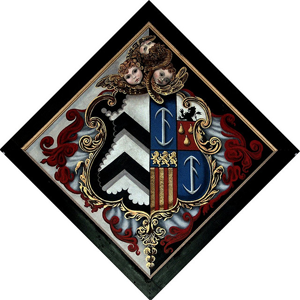 |
|
|
|
Memorial to Thomas-Snelling (d1623)
Church-of-St-Nicholas,King's Lynn
Note the children below, including an infant.
|
| |
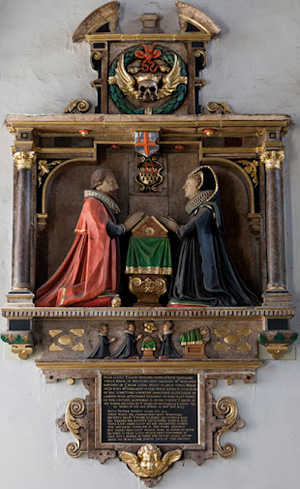 |
| |
| |
|
|
|
|
Scotland
Only about fifty hatchments still exist in Scotland. This sparseness
is due to in the mid 17th century Church of Scotland. In 1643 The
General Assembly the Church of Scotland passed an Act which prohibited
'Honours of Arms or any such like monuments'.
A surviving document of Strathbogie in Aberdeenshire records that
"Att Grange, 19th December, 1649... the presbytry finding
some pinselis in memorie of the dead hinging in the kirk, presentlie
caused them to be pulled doun in face of presbytry, and the minister
rebuiked for suffering to hing ther so long."
Scots hatchments do not follow in the sparse pattern that modern
writers lay out for hatchments and funeral heraldry. They are often
highly decorated with the coats of antecedents and with tears, skulls
(mort heads), and mantles.
It is not unusual to place the arms of the father and mother of
the deceased in the two lateral angles of the lozenge, and sometimes
there are 4, 8 or 16 genealogical escutcheons ranged along the margin.
|
|
|
|
|
|
Hatchment of the arms of George Douglas-Hamilton,
1st Earl Of Orkney, K.T
|
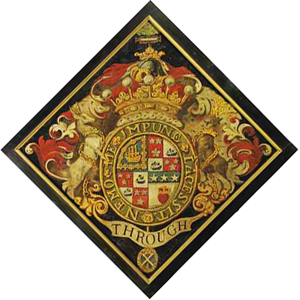 |
| |
| |
|
Campbell - a painted canvas hatchment with
the arms of John Campbell, 2nd Earl of Breadalbane and his
second wife Henrietta
|
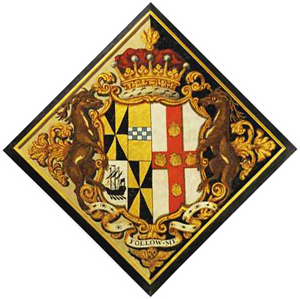 |
|
|
|
|
Netherlands & Belgium
In the Netherlands hatchments (in Dutch, rouwbord, literally meaning
"mourning shield") with the word "OBIIT" (Latin:
"deceased") and the date of death were hung over the door
of the deceased's house and later on the wall of the church where
he was buried.
In the 17th century the hatchments were black lozenge-shaped frames
with the coat of arms. In the 18th century both the frames and the
heraldry became more elaborate. Symbols of death like batwings,
skulls, hour-glasses and crying angels with torches were added.
The names and arms of the 8, 16 or 32 armigerous forbears also featured
- sometimes an invention by the nouveaux riches.
The British tradition of differentiating between the background
of hatchments of bachelors, married men, widowers and others is
unknown in the Low Countries. The arms of a widow are sometimes
surrounded by a cordelière (knotted cord) and the arms of
women are often, but not always, shaped like a lozenge. There were
no Kings of Arms to rule and regulate these traditions.
In 1795 the Dutch republic, recently conquered by revolutionary
France, issued a decree that prohibited the use of heraldic shields.
Thousands of hatchments were chopped up and burned. In the 19th.
Century hatchments were almost forgotten and only a few noble families
kept the tradition alive, though in Flanders, both noble families
and the clergy of the Roman Catholic Church have kept up the tradition
of erecting hatchments.
Unlike the British hatchments Dutch and Belgian examples are often
inscribed with dates of birth and death, often the Latin words "obit",
"nascent" and "svea" are used to give the dates
of death and birth and the age of the deceased. Name and titles
are sometimes added along with the arms of ancestors.
Sometimes the coats of arms of a man and a woman are shown on the
same hatchment.
|
|
Hatchment of Baroness Mathilde de Pitteurs-Hiegaerts,
Begijnhofkerk Sint-Truiden, Belgium
|
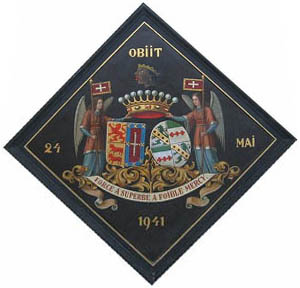 |
| |
|
Pieterskerk, Leiden, Zuid-Holland
|
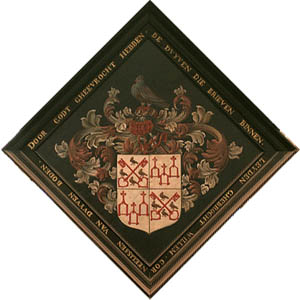 |
|
|
|
|
|
|
Germany
In Germany a totenschild (death-shield) is an approximate equivalent
of a hatchment. A totenschild is a memorial plaque for a deceased
noble or bourgeois hung in a church or chapel. It recalls in heraldic
form of arms and an inscription the life of the dead man.
The custom had its heyday in the 16th Century and gradually declined
over the next two hundred years, an epitaph on a monument of wood
or stone, gradually taking over its function.
The origins of the practice lie in the 12th century when the shield
and helmet of a deceased knight was hung in his honour over his
grave in his local church or chapel.. At first the knight's real
shield was used rather than a painted replica. The few existing
shields surviving from the Middle Ages owe their preservation mainly
to the fact that they were hung well out of the way above the grave.
In the Renaissance wooden replicas started to be used - sometimes
circular, sometimes octagonal and occasionally rectangular. A single
line inscription ran around the edge, giving the name of the deceased,
the date of his death, and mention of his social position.
In the Baroque period the totenschild became more magnificent.
The coat of arms was no longer in the foreground, Instead the main
features became the rich and varied design of the frame and various
decorations - ribbons, scrolls and allegorical figures. The inscription
was moved to a rectangular or oval field within the composition.
The right to hang a totenschild was a privilege, originally reserved
for the nobility. Later, the the privilege was extended to members
of knightly orders and to patrician citizens of the city, but not
clergymen. The arms of a woman occasionally appear on the shield
of her husband. Not everyone entitled could not afford a funeral
shield, because the cost of painting it and making the requisite
donation to the church could be prohibitive.
The National Museum in Nuremberg has a large collection of totenschilds
as does the University Museum of Cultural History in Landgrafenschloss
in Marburg.
|
|
Bartold von Mandelsloh, Marktkirche, Hannover
|
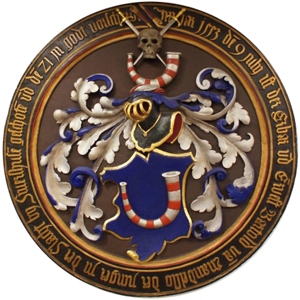 |
| |
|
|
MariaWörth, Pfarkirche
|
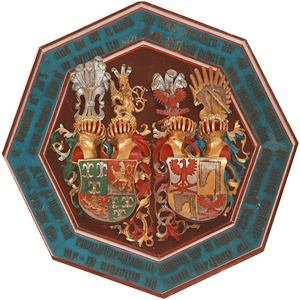 |
|
|
Hans Jacob Notthafft, 1525
|
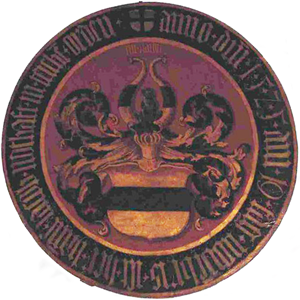 |
|
|
Fürstin von Gallizin, Landesmuseum in
Münster
|
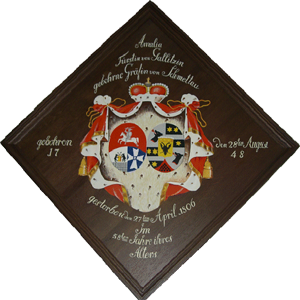 |
|
|
Other
|
|
Hatchment of Arent Tingnagel, 1665
Holmenskirke, Copenhagen, Sjælland,
Denmark
|
 |
|
|
|
Hatchment from Christchurch, Philadelphia,
Pennsylvania, USA
The banner at the bottom reads
FREDERICK SMYTH
DIED 5th MAY, 1806 AGED 69
BE VIRTUOUS & BE HAPPY
Smyth was born in England. It is not obvious
why half the background is white - perhaps no-one in Philadelphia
understood the colour coding convention
|
|
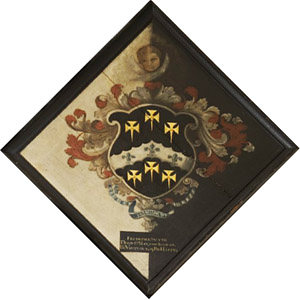
|
|
|
|
|
|
|












 A
Bachelor's Hatchment.
A
Bachelor's Hatchment. 
 A
Married Man's Hatchment.
A
Married Man's Hatchment. A
Widow's Hatchment
A
Widow's Hatchment The
Hatchment of a Wife
The
Hatchment of a Wife
 The
Hatchment of a Widower
The
Hatchment of a Widower













 The
Hatchment of an unmarried daughter
The
Hatchment of an unmarried daughter
 The
Hatchment of an unmarried son
The
Hatchment of an unmarried son The
Hatchment of a Bishop
The
Hatchment of a Bishop

 The
Hatchment of a Man who has married an Heraldic Heiress
The
Hatchment of a Man who has married an Heraldic Heiress

 The
Hatchment of a Peer
The
Hatchment of a Peer









 According
to many sources the practice of raising hatchments as funeral monuments
is long dead. A little research reveals that this is far from true.
Here are a few examples.
According
to many sources the practice of raising hatchments as funeral monuments
is long dead. A little research reveals that this is far from true.
Here are a few examples.




















